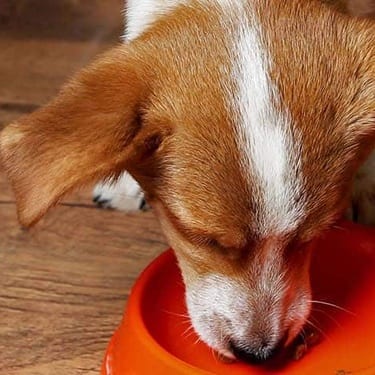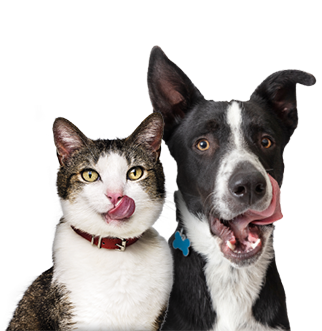
-
Find the right food for your petTake this quiz to see which food may be the best for your furry friend.Find the right food for your petTake this quiz to see which food may be the best for your furry friend.Health CategoryFeatured products
 Adult Oral Care Small & Mini Chicken, Rice & Barley Recipe Dog Food
Adult Oral Care Small & Mini Chicken, Rice & Barley Recipe Dog FoodClinically proven kibble technology to reduce plaque & tartar build-up, specially designed for small & mini dogs
Shop Now Adult Small Bites Chicken & Barley Recipe Dog Food
Adult Small Bites Chicken & Barley Recipe Dog FoodSupports lean muscle for dogs who prefer smaller kibble
Shop Now Adult 7+ Small Bites Chicken Meal, Barley & Rice Recipe Dog Food
Adult 7+ Small Bites Chicken Meal, Barley & Rice Recipe Dog FoodSupports energy level and beautiful coat in mature dogs who prefer smaller kibble
Shop NowFeatured products Adult 7+ Tender Tuna Dinner Cat Food
Adult 7+ Tender Tuna Dinner Cat FoodWith delicious chunks in a decadent gravy
Shop Now Sensitive Stomach & Skin Chicken & Beef Dinner
Sensitive Stomach & Skin Chicken & Beef DinnerGourmet daily nutrition, carefully made. Tasty chunks with chicken & beef in a decadent gravy. Supports digestive health, nourishes skin and promotes a lustrous fur.
Shop Now Adult Chicken & Spinach Casserole Cat Food
Adult Chicken & Spinach Casserole Cat FoodWith delicious chunks in a decadent gravy
Shop Now -
DogCat
- Cat Tips & Articles
-
Health Category
- Weight
- Skin & Food Sensitivities
- Urinary
- Digestive
- Kidney
- Dental
- Serious Illness
-
Life Stage
- Kitten Nutrition
- Adult Nutrition
Featured articlesHill's Australian Bushfire EffortsRead More Water
WaterWater is the most important nutrient of all and essential for life. Animals can lose almost all their fat and half their protein and still survive, but if they lose 15% of their water, it will mean death.
Read More Pet Food Storage Tips
Pet Food Storage TipsWhere you store your cat and dog food can make a big difference in the quality and freshness once it is opened. Here are some common questions and recommendations for optimal storage for all of Hill’s dry and canned cat and dog food.
Read More -


Pet parents are more invested in the health of their pets now than ever before. Learning how to take a dog's temperature and how to take a cat's temperature is clear evidence of this commitment. Veterinarians are delighted to see more pet parents actively engaging with the health of their pets, and most are more than happy to help them acquire this simple skill.
Learning how to take a dog or a cat's temperature is fairly easy to do. Let's look at the best way to take the temperature of your furry family members.
Why You Should Learn To Take Your Pet's Temperature

As in humans, dogs' and cats' body temperatures can tell us a lot about their overall health. While these species' temperatures are higher than ours (101.3 degrees Fahrenheit / 38.5 degrees Celsius), it's easy enough to tell what's too high or too low.
Fevers (above 102.5 degrees Fahrenheit / 39.2 degrees Celsius) can inform pet parents of issues like heat stroke, infections or systemic inflammatory diseases, as noted by the Merck Veterinary Manual.
Meanwhile, low temperatures (below 100 degrees Fahrenheit / 37.8 degrees Celsius) can tell us whether they've lost too much body heat. They may be hypothermic (as with exposure to the elements in winter) or possibly experiencing the effects of shock, low blood sugar, malnutrition or another severe system-wide disease.
Modest drops in temperature can even note when a mother is getting ready to give birth to her babies!
When To Take a Pet's Temperature
Whenever pets are lethargic, quieter than normal, or exhibit a change in appetite or other normal behaviors, temperature-taking can be helpful. This is especially true for cats, who are notorious for hiding most signs of illness. However, it's important to understand that plenty of illnesses can present without changes in body temperature. Thus, you should only take your pets temperature if you are planning to promptly contact a veterinarian and discuss your concerns about your pets health. Additionally, if you do not have experience taking your pet's temperature you should talk to a veterinarian before doing so. This is for the safety of both you and your pet.
Not only can a body temperature reading help you decide how soon to bring your pet to the vet (an elevated temperature should always prompt a call to your veterinarian), but an at-home reading gives the vet very useful information, too.
In fact, at-home temperature-taking is so beneficial that it has become a common teaching point for vets and their teams. If you are interested in learning this skill ask your vet about getting a tutorial as most are happy to teach you how to manage this safely at home.


Tasty Tips
Young pets may need several visits in their first year for vaccinations. Adult pets generally benefit from annual check-ups, while senior or special-needs pets might require more frequent visits.
How To Take a Dog's Temperature
The mechanics of how to take a dog's temperature are simple. Here are a few basics:

- Buy the right tool: A plastic, digital rectal thermometer (for humans) can be found at any pharmacy. Typically, for less than 10 dollars, there's no better healthcare investment. (Note: Most digital thermometers serve for either rectal or oral use. Ask your pharmacist if you're unsure.)
- Restrain properly: Most pet parents will find this to be a two-person job. One person can hold their pet's head and keep their body still while the other holds their tail up to facilitate rectal insertion of the thermometer. For dogs who avoid the procedure by sitting down, a third person (to keep the patient in a standing position) may be necessary. Treats and toys are generally helpful as distractors. If your pet becomes distressed or you do not feel you can restrain them safely, it is better to wait on having their temperature taken until they are being evaluated by your vet. Although this information is helpful, it should not be acquired at the risk of compromising the health and well-being of both you and your pet.
- Take their temperature: After applying a bit of petroleum jelly to the business end of the thermometer (a pea-sized amount), insert it into the rectum (an inch is far enough). Then, wait for the beep (or for the digital readout to stabilize) and you're done!
Looking to learn how to take a cat's temperature? The mechanics are just as easy. The only hard part is getting your kitty to behave. Because cats are generally smaller and often resist restraint, cat caretakers may need to try a variety of inducements or restraint techniques. This is where it becomes ideal to have your vet's team demonstrate the best methods for your individual cat.
Things to Keep in Mind When Taking Your Pet's Temperature
When learning how to take a dog's temperature, or a cat's, having the right equipment is essential. For example, glass thermometers can break and expose your pet to mercury and glass, and some older thermometers can take quite a long time to get to temperature.
It's also critical that pet parents take their pet's body temperature from the rectum. Although vets yearn for a less invasive way to take their patients' temperatures, non-rectal methods can be more difficult to interpret.
When learning how to take a cat's temperature, restraining your cat may take some time and patience. Watching online videos on properly restraining your cat can be helpful in these cases, but having your veterinarian show you how to do this for your specific cat remains your best course of action.
It's also important to note that some pets' body temperatures are naturally higher or lower than the majority. Moreover, exercise and excitement can raise a temperature and lengthy inactivity or geriatric age can lower it. Again, anytime you elect to take your pets temperature it should be done with the intention of promptly contacting a veterinarian to discuss your concerns. Finally, it bears repeating that not all pets can be trained to accept this procedure. If the stress it causes is significant or your safety is at risk, at-home temperature-taking should be reconsidered.


Dr. Patty Khuly is an award-winning veterinarian known for her independent thinking, her spirited pet advocacy, her passion for the veterinary profession, and her famously irreverent pet health writing.
Dr. K is an honors graduate of both Wellesley College and the University of Pennsylvania School of Veterinary Medicine. She received her MBA at The Wharton School of Business as part of the prestigious VMD/MBA dual-degree program. She now owns Sunset Animal Clinic, a veterinary practice in Miami, Florida.
Related products

Supports lean muscle for dogs who prefer smaller kibble

With delicious chunks in a decadent gravy

Supports energy level and beautiful coat in mature dogs who prefer smaller kibble

Gourmet daily nutrition, carefully made. Tasty chunks with chicken & beef in a decadent gravy. Supports digestive health, nourishes skin and promotes a lustrous fur.
Related articles

Where you store your cat and dog food can make a big difference in the quality and freshness once it is opened. Here are some common questions and recommendations for optimal storage for all of Hill’s dry and canned cat and dog food.

Learn what to look for in healthy pet food & nutrition, including ingredients, quality of the manufacturer, your pet's age, and any special needs they have.

Water is the most important nutrient of all and essential for life. Animals can lose almost all their fat and half their protein and still survive, but if they lose 15% of their water, it will mean death.

Put your pet on a diet without them knowing
Our low calorie formula helps you control your pet's weight. It's packed with high-quality protein for building lean muscles, and made with purposeful ingredients for a flavorful, nutritious meal. Clinically proven antioxidants, Vitamin C+E, help promote a healthy immune system.
Put your pet on a diet without them knowing
Our low calorie formula helps you control your pet's weight. It's packed with high-quality protein for building lean muscles, and made with purposeful ingredients for a flavorful, nutritious meal. Clinically proven antioxidants, Vitamin C+E, help promote a healthy immune system.

